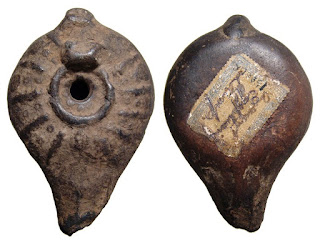A glimpse into Canaanite art and objects
While it lacked political or ethnic cohesiveness, Canaan’s inhabitants throughout the region had cultural similarities that reflected in archeological remains and the body of Canaanite literature, art, and artifacts known today. Literary sources largely provide what is known today about Canaan’s history and culture, and they pair well with what archeology has so far uncovered about Canaan, according to the New-York based family-owned Sadigh Gallery.
 |
Image source: FactsandDetails.com
|
 |
Image source: TimesofIsrael.com
|
Canaanite art, artifact, and objects maintain an identity derived from different cultures, such as the Mycenaean, Mesopotamian and Egyptian cultures. A stark symbol of the Canaan life – characterized by rural towns and farms – was a form of hoe, which helped the Canaanites break up soil to prepare for sowing. Thus, a number of ancient digging tools from the area can be dated to the Late Bronze or Early Iron Age, or around 1200 BC.
Canaan art objects excavated by archaeologists comprise an 18.5-inch-long ivory horn marked with gold bands. It dates to 1400 BC and uncovered at Megiddo in modern-day Israel. A contemporary bronze cast of a goddess figure, on the other hand, was found in a Canaanite shrine at Nahariyah, dating to around 1500 BC.
Oil lamps, featured in the Canaanite collection of Sadigh Gallery, were among the most widely produced types of ancient pottery worldwide. Ancient households likely used lamps as their primary source of light once the sun had set, or in places that were dark or enclosed. These terracotta oil lamps show primitive human figures and still have traces of carbon residue from their ancient use around the wick hole.
Sadigh Gallery in New York City specializes in the handling and selling of ancient art, artifacts, and coins from all over the world. The family-owned business handles each interaction with their customers with utmost importance. Read



Comments
Post a Comment